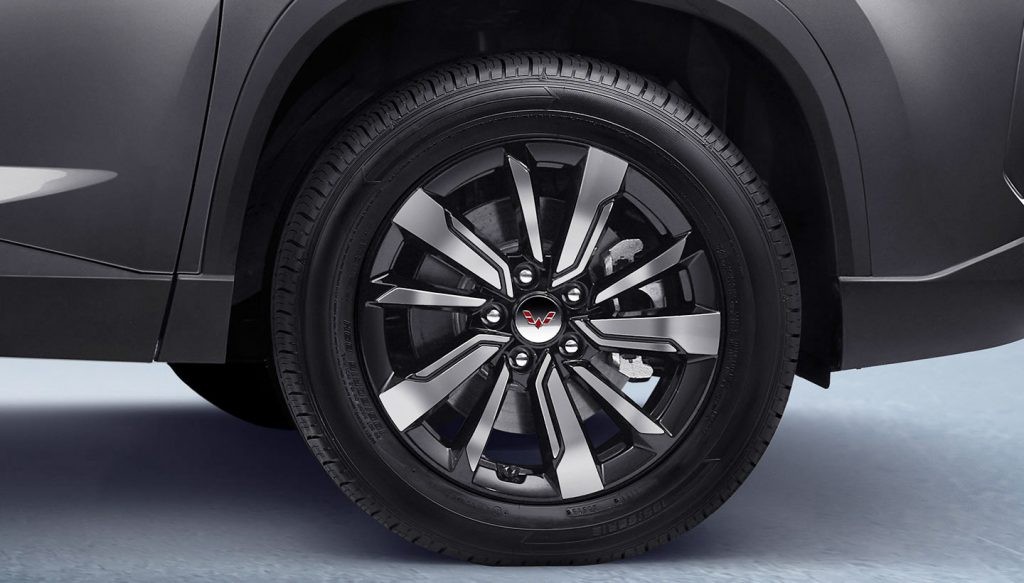It’s unsettling when your car starts to vibrate, especially when you’re driving at higher speeds. That shaking steering wheel or vibrating seat can be more than just uncomfortable; it can be a sign of underlying issues that need immediate attention. For many drivers, especially those new to car ownership, diagnosing the cause of this vibration can be puzzling.
A car shaking at high speeds is often an indicator of a problem that shouldn’t be ignored. Continuing to drive with these vibrations can not only be unpleasant but could also lead to further damage to your vehicle and potentially compromise your safety. Identifying and addressing the root cause promptly is crucial for maintaining your car’s health and ensuring a smooth, safe driving experience.
While experienced car enthusiasts might quickly pinpoint common culprits, this guide is designed to help all drivers, particularly beginners, understand the common reasons behind car shaking at higher speeds. We will break down the potential causes, from the most frequent to those that require more specialized attention, empowering you to better understand your vehicle and take appropriate action.
1. Tire Troubles
Why is my car shaking? Tires are often the first place to investigate when your car vibrates at higher speeds. They are the crucial point of contact between your vehicle and the road, playing a vital role in ride comfort and handling. Problems with your tires can directly translate into noticeable vibrations throughout the car.
Unbalanced Tires: Just like a washing machine off balance, unbalanced tires can cause significant shaking, especially as speed increases. This imbalance can occur due to uneven wear, damage from potholes, or even simply losing a wheel weight. Wheel weights are small lead or steel weights attached to the rim to ensure even weight distribution around the tire. If these are missing or improperly placed, imbalance occurs.
Tire Pressure Issues: Incorrect tire pressure, particularly underinflation, can also lead to vibrations. When tires are underinflated, they don’t maintain their optimal shape, leading to uneven contact with the road and subsequent shaking. Always ensure your tires are inflated to the recommended pressure, which you can usually find on a sticker inside your driver’s side doorjamb or in your owner’s manual.
Tire Condition: Worn or damaged tires are another common cause. Bulges, sidewall damage, or uneven tread wear can disrupt the tire’s smooth rotation and cause vibrations. Regularly inspect your tires for any signs of damage or wear. If the tread depth is low or you notice any irregularities, it’s time for a tire replacement.
Flat Spots: If your car has been sitting for an extended period, flat spots can develop on the tires where they contact the ground. These flat spots can cause vibrations, especially at higher speeds. Often, these flat spots will resolve themselves after driving for a while as the tires warm up and regain their shape. However, severe flat spots might require professional attention.
2. Engine Misfires and Issues
Why is my car shaking? While less directly related to speed in some cases, engine problems, particularly misfires, can become more apparent as your car accelerates to higher speeds. A misfire occurs when one or more of your engine’s cylinders fails to ignite the air-fuel mixture properly. This can lead to an imbalance in engine operation, resulting in vibrations.
Fuel Delivery Problems: Inconsistent fuel supply to the engine can cause misfires. This could be due to a clogged fuel filter, a failing fuel pump, or issues with fuel injectors. A lack of proper fuel can lead to uneven combustion, resulting in engine shaking that translates to car vibrations, especially at higher speeds when the engine is working harder.
Spark Plug Problems: Spark plugs are responsible for igniting the air-fuel mixture in the cylinders. Worn, fouled, or damaged spark plugs can cause misfires. If the spark is weak or inconsistent, combustion will be incomplete, leading to engine vibrations. Spark plugs are a maintenance item and should be replaced at recommended intervals to ensure optimal engine performance.
Vacuum Leaks: Vacuum leaks can disrupt the air-fuel mixture and cause engine misfires. These leaks can occur in various hoses and seals throughout the engine intake system. An improper air-fuel ratio can lead to rough idling and vibrations that become more pronounced at higher speeds.
Engine Mounts: While not directly causing misfires, worn or broken engine mounts can exacerbate engine vibrations. Engine mounts are designed to secure the engine to the car’s chassis and absorb engine vibrations. If these mounts are failing, engine vibrations can be transmitted more directly to the car’s frame, making shaking more noticeable, especially when accelerating or at higher speeds.
3. Worn Shock Absorbers or Suspension Components
Why is my car shaking? Your car’s suspension system, particularly the shock absorbers (or struts), plays a crucial role in maintaining stability and ride comfort. Worn shock absorbers are less effective at dampening vibrations from the road, which can become amplified at higher speeds.
Reduced Damping: Shock absorbers work by controlling the movement of your car’s springs, preventing excessive bouncing and oscillations. When they wear out, they lose their ability to effectively dampen these movements. This lack of damping can lead to increased vibrations, especially when driving over uneven road surfaces or at highway speeds.
Uneven Wear and Tear: Just like tires, shock absorbers can wear unevenly. Damage to one shock absorber can cause an imbalance in the suspension system, leading to vibrations and uneven handling, which is more noticeable at higher speeds.
Other Suspension Issues: Beyond shock absorbers, other suspension components like worn ball joints, control arm bushings, or tie rod ends can also contribute to vibrations. These worn parts can create play in the suspension system, allowing for unwanted movement and shaking, particularly at higher speeds and during turns.
4. Brake System Problems
Why is my car shaking? If you notice the shaking primarily when you apply the brakes at higher speeds, the issue is likely related to your brake system. Warped brake rotors are a common cause of vibrations felt during braking.
Warped Brake Rotors: Brake rotors are the discs that the brake pads clamp onto to slow down your car. Over time, or due to excessive heat and wear, these rotors can become warped or uneven in thickness. When you apply the brakes, the brake pads encounter these uneven surfaces, causing pulsations and vibrations that you feel in the steering wheel and brake pedal. This is often more pronounced at higher speeds.
Worn Brake Pads: While less likely to cause severe shaking, severely worn brake pads can sometimes contribute to vibrations, especially if they have worn unevenly or are making metal-to-metal contact with the rotors. Regular brake pad inspections and timely replacements are crucial for maintaining braking performance and preventing rotor damage.
Sticking Calipers: A brake caliper that is sticking or not releasing properly can also cause vibrations. If a caliper is dragging, it can cause uneven wear on the brake rotor and pads, leading to vibrations and potential overheating of the brake components.
5. Axle or Driveline Issues
Why is my car shaking? Problems within the axle or driveline are less common but can be serious causes of car vibrations, especially at higher speeds. These components are responsible for transmitting power from the engine and transmission to the wheels.
Bent Axle: A bent axle, often resulting from a significant impact like hitting a curb or being in an accident, can cause severe vibrations. A bent axle will cause the wheel to rotate unevenly, leading to shaking that becomes more pronounced as speed increases.
Damaged CV Joints: Constant velocity (CV) joints are part of the axle assembly in front-wheel-drive and all-wheel-drive vehicles. These joints allow the axles to flex and move as the suspension operates. Damaged or worn CV joints can cause vibrations, clicking noises, and shaking, particularly during acceleration or when turning at higher speeds.
Out-of-Balance Driveshaft: In rear-wheel-drive and four-wheel-drive vehicles, the driveshaft transfers power from the transmission to the rear axle. If the driveshaft becomes unbalanced, perhaps due to a lost weight or damage, it can cause vibrations, especially at higher speeds. Driveshaft issues often present as a rumbling or shaking felt in the floorboard or seat.
Conclusion
Experiencing car shaking at higher speeds is a clear signal that something needs attention. While this guide covers the most common causes, diagnosing the precise issue often requires a professional inspection.
If you are experiencing these vibrations, it’s recommended to:
- Start with the tires: Check tire pressure and visually inspect for damage or wear.
- Listen carefully: Try to identify when the vibration occurs – is it constant, only during braking, or during acceleration? This can help narrow down the potential causes.
- Don’t delay a professional check: If you can’t identify an obvious tire issue or if the vibrations persist, take your car to a qualified mechanic. They can perform a thorough inspection, pinpoint the problem, and recommend the necessary repairs.
Addressing car vibrations promptly not only improves your driving comfort but also ensures your safety and helps prevent more costly repairs down the road. Don’t ignore the shake – take action to keep your car running smoothly and safely.

